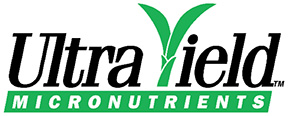INTRODUCTION:
Recent Studies have shown that water soluble Zn fertilizers are the most effective way to correct Zn deficiencies in soils used for crop production (Shaver et al., 2007, Gangloff et al., 2000, Amrani et al., 1999, 1997, Mortvedt et al., 1993, Mortvedt, 1992).Zinc fertilizer water solubility levels of 40-50% are needed to meet the Zn requirements for the current crop (Amrani et al., 1999, Mortvedt et al., 1993.), and high correlations have been found between Zn fertilizer water solubility and plant growth and Zn uptake (Amrani et al., 1999). Zinc sulfate (ZnSO4 . 2H2O) fertilizers have been found to be a very reliable because of their relatively high water solubility. However, there are new Zn fertilizer products continually being brought to the market. Some of these products claim an "efficiency ratio" meaning that one unit of their product is equal to several units of traditional Zn fertilizers, such as ZnSO4 when applied in the field. One new Zn fertilizer with a claimed efficiency ratio is Wolftrax DDP (dry dispersible powder), which claims an efficiency ratio of 9:1 because of a "micro-static adhesion" that allows the Zn fertilizer (in powder form) to stick to every granule of NPK fertilizer thereby increasing efficiency. Another Zn fertilizer with a claimed efficiency ratio is Origin 10% LS (lignosulfonate) which claims a 7:1 efficiency ratio due to natural organic agents that protect the metal ions from tie-up by soil particles and conversion to an insoluble form of Zn. The validity of these claims must be examined because some products simply rely on residual soil Zn to justify reduced application rates.
The objective of this study was to evaluate the advantages and limitations of the "efficiency ratio" claims of these Zn fertilizers using ZnSO4 as our reference standard by applying these fertilizers according to their efficiency ratios. By examining plant biomass production as well as plant Zn uptake and Zn concentration we can better understand what Zn fertilizers are effective in supplying Zn to the plant.
CONCLUSIONS:
The ZnSO4 source produced the highest plant Zn concentration and uptake levels compared on the efficiency ratio basis with Origin LS10 or Wolftrax Zn fertilizers.The ZnSO4 was also the only source that produced a positive and consistent trend in Zn concentration and uptake in response to application rate. The Origin\u00ae LS10 source showed no significant increase in Zn uptake or plant Zn concentration as compared to the check treatment (0 Zn/ac) suggesting this source provided little or no Zn for crop uptake. The Wolftrax source did supply Zn to the crop in quantities intermediate to the amount supplied by the ZnSO4 and Origin LS10 sources, but these concentrations and uptake values were not significantly different than the check. However, the Wolftrax levels were in the same statistical array (not different) from the ZnSO4 material when averaged across all rates. However, no positive relationship between rates and plant Zn concentrations or uptake were detected with the Wolftrax material. Due to the relatively low Zn water solubility and extremely low actual Zn application rates of the efficiency ratio based sources, the plant roots have a low probability of encountering the Zn material, which greatly reduces the opportunity for plant uptake. The opposite is true of the highly water soluble ZnSO4 source where Zn is in the soil solution and\/or on the exchange sites. The ZnSO4 source outperformed the other two materials evaluated in this study. These results are consistent with our previous studies as well as other studies reported in the literature. Water solubility remains as the major factor controlling Zn availability of fertilizer Zn to plants. Our results do not confirm the "efficiency ratio" principle proposed by the fertilizer manufacturers.
